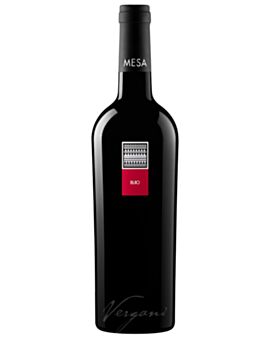Sardinia
Sardinia
Sardinia is not an island. Sardinia is a continent. Identity, culture, language are and remain peculiar. Here the joy of life and the seriousness of life live close to each other. And the wines?
Spicy, warm and full-bodied. This is how the red wines from Sardinia taste. Their idiosyncratic style sets them apart from the rest of Italy's oenological scene. Cannonau, Carignano or Vermentino - these are the names of the most famous vines of the mountainous wine island, but, to anticipate: Sardinia has a truly colorful range of indigenous varieties to offer. Nuragus, Semidano, Monica, Bovale, Muristellu or Giro are the names of the fascinating grape varieties that grow on a vineyard area of almost 27,000 hectares. In addition, almost every region of Sardinia has its own tradition of viticulture and its own wines. In the dry and hot south, the home of several famous red wine names, it looks different than in the cooler north, where rather fresh white wines are pressed. But of course, famous rosé or dessert wines are also not uncommon in Sardinia.
Our discovery: Cantina Mesa. It was founded in 2004, and in 2006 the first wines came on the market. Quality and autochthonous Sardinian grape varieties are at the center of the work. From the beginning, the wines impressed with their precise clarity, radiance and rooted expression. 98 percent of Mesa wines are vinified in steel tanks to pay respect to the terroir and the typicality of the grape varieties. Cleanliness. Tranquility. Clarity. Precision.
Even the rosé wine called Conte Lemár is not primarily about a beautiful bottle shape, about an attractive label, but about quality. Between the hills of Telti and Calangianus, in the northeastern part of Sardinia, there are 30 hectares of vines planted with Cannonau and Vermentino. Right. Cannonau = Grenache and Vermentino = Rolle. In the only DOCG zone in Sardinia, the DOCG Vermentino di Gallura, Conté Lemár owns two vineyards. For Rosato Lemár, the grapes are harvested by hand early in the morning between 4 and 9 am in small crates of 10 kilograms each. The crates are immediately transferred to a refrigerated container to bring the core temperature below 7 degrees. This laborious but quite reasonable procedure prevents spontaneous fermentation of the grapes and their oxidation. At the cantina, the grapes are meticulously but quickly sorted out by hand on a selection table. This is also a process rarely encountered in the production of rosé wines. Immediately thereafter, the grapes are pressed and cold macerated in steel tanks. This cold maceration before fermentation extracts positive ingredients of aromatic and color nature from the high quality grapes. Then, spontaneous fermentation takes place and several times a week, as in Bordeaux, the bâtonnage technique is used to stir the lees. Let no one say that the clocks in Sardinia's viticulture stand still...


